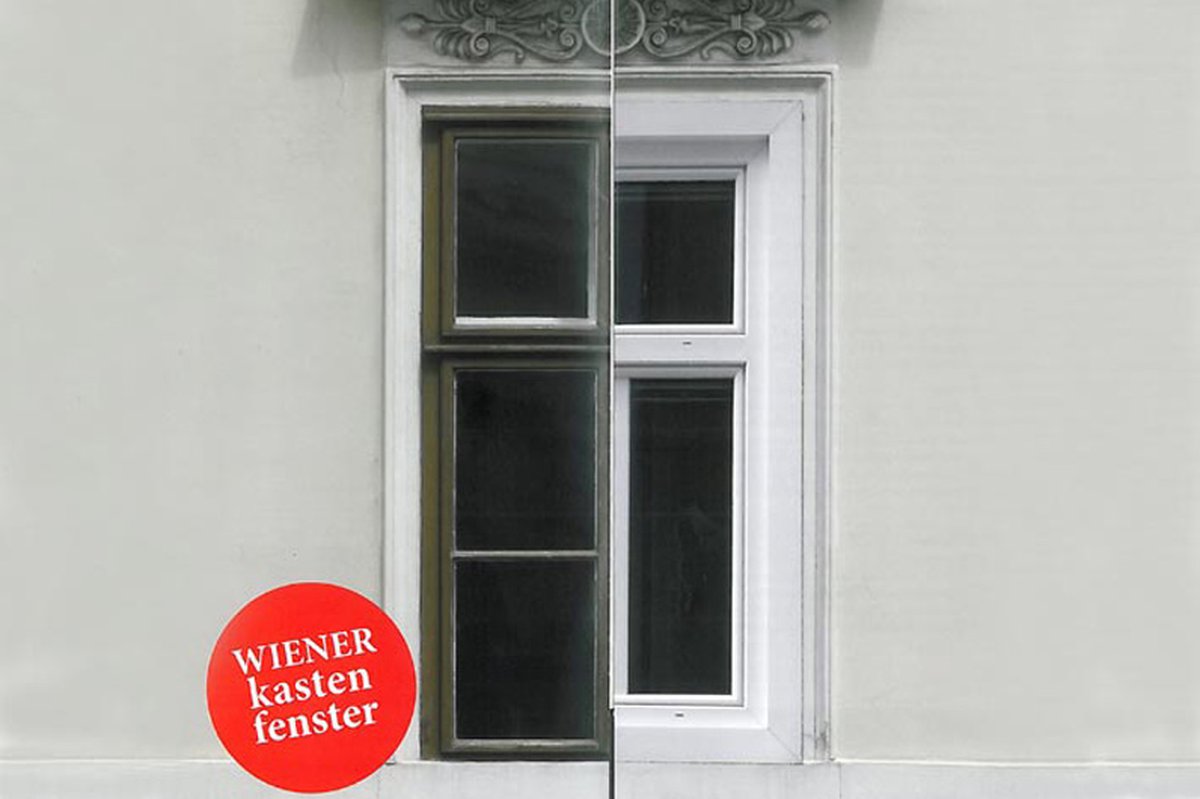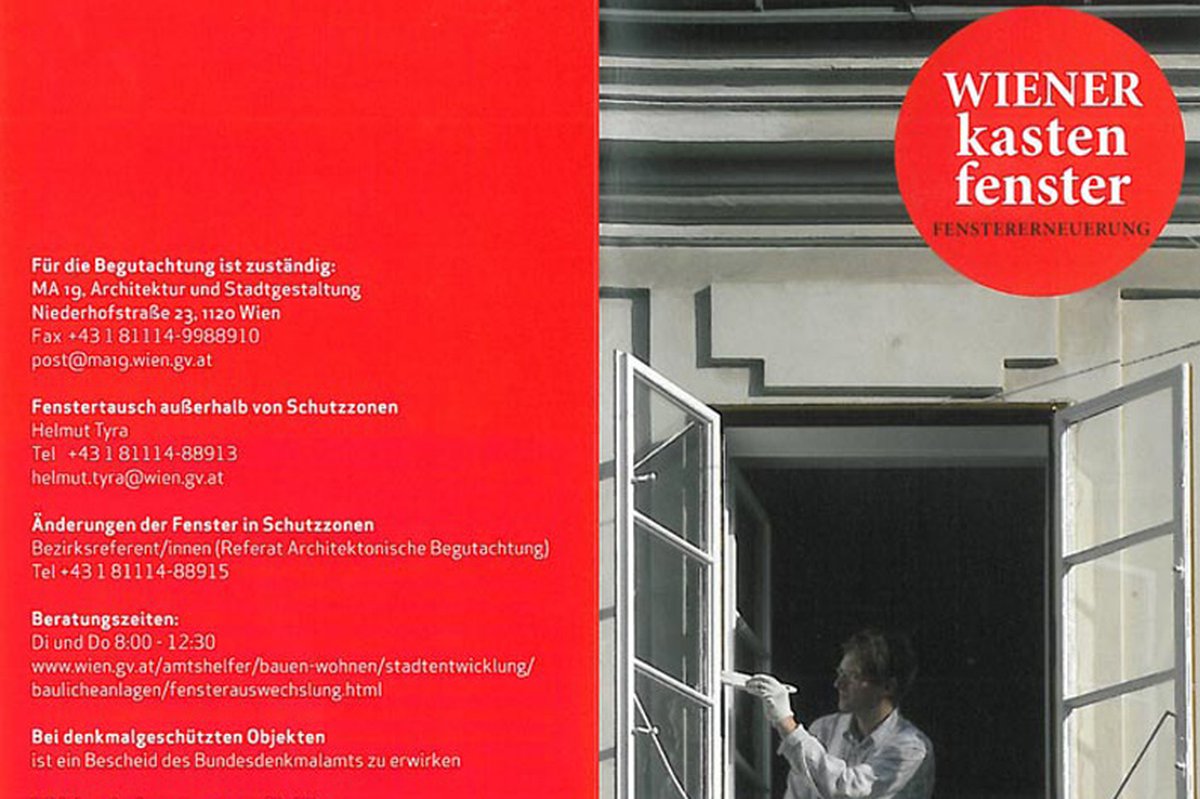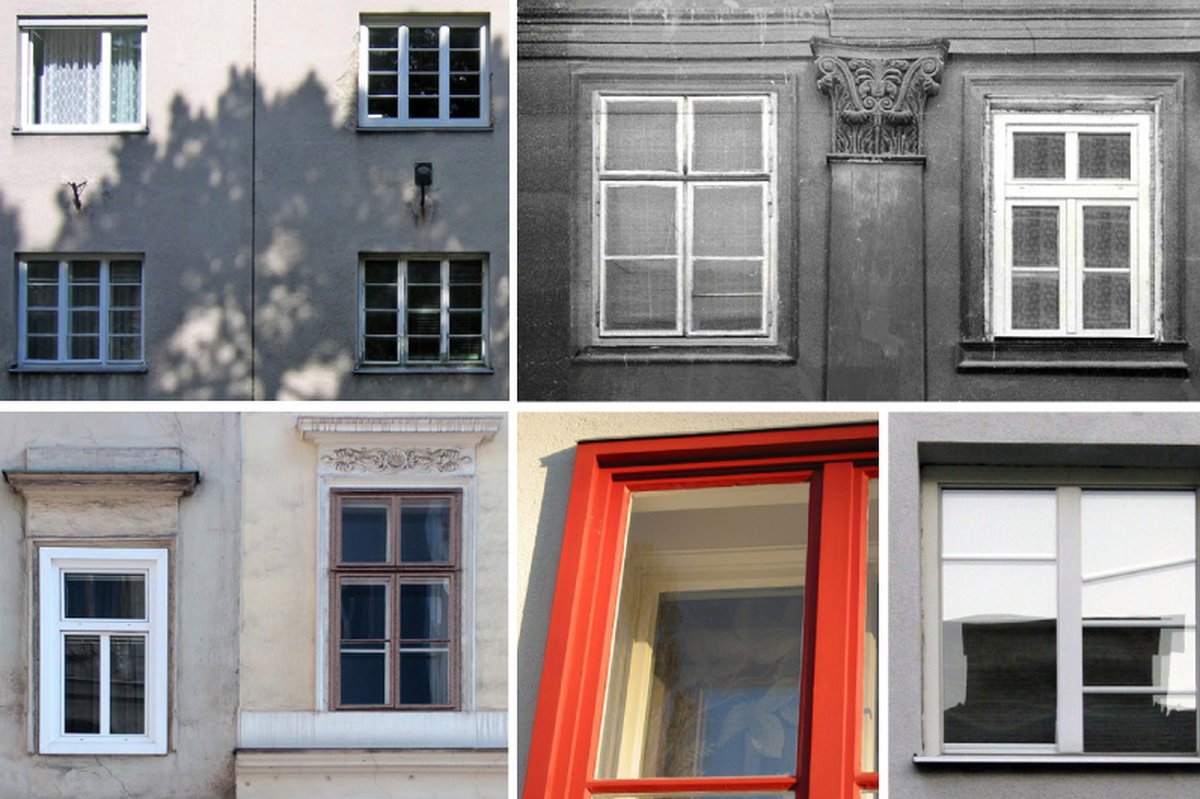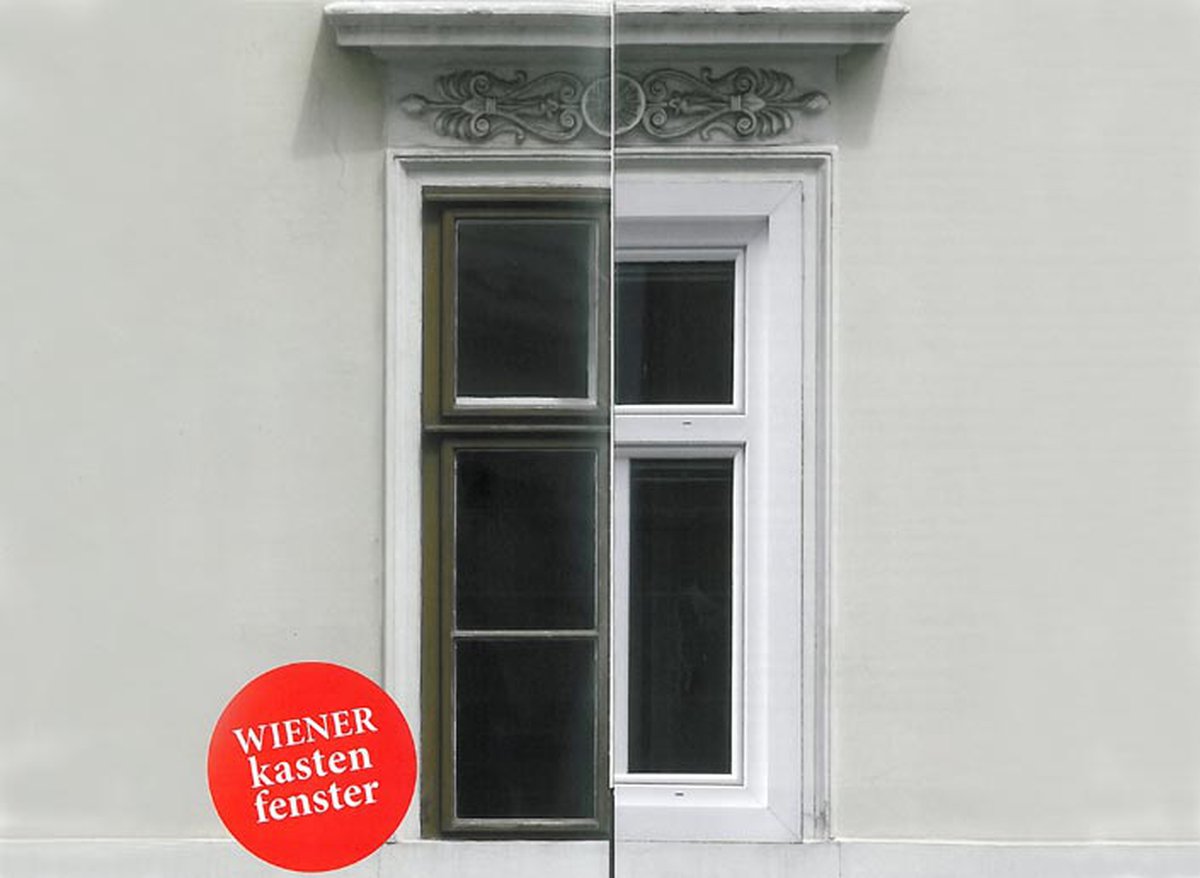Vienna Window Study
The two-part study examines the significance and impact of historic windows on the cityscape. The comparative collocation of technical and economic facts and figures with regard to new and historic (primarily box-type) windows shows that the actual situation does not correspond with general, widespread assumptions and prejudices. Ultimately, the study serves to correct the image of historic windows and to counteract the trend towards replacing windows, and as an argumentation aid for decision-making authorities.
Significance of windows for the cityscape: The comparative study shows that windows play a huge role in the appearance of buildings in the city. Windows are usually an important part of the architectural concept or design. The less ornamentation and design a façade has, the greater the significance of the windows for the overall appearance.
Changes in the appearance of windows: The new simplified sound-control glass window almost always deviates significantly in appearance from the historic (original) box-type window. The placement of the window in the reveal is different, the dimensions of the glazings are reduced and the frame parts enlarged, not to mention differences in colour and material. After centuries of unchanging technologies and craftsmanship, the introduction of plastic, metal and sound-control glass windows around 1950 led to a great technological change in these structural elements, and thus also to a massive change in their appearance.
Impact on the cityscape: Overall, it must be noted that around 60% of the original windows in Vienna have already been lost. Thus, assuming that windows play a vital role in the appearance of a building, one can already speak of a drastic change in Vienna’s cityscape. This dramatic development, which is leading to the loss of historic substance, is therefore the result of the past decades, and windows are still not getting the attention they deserve in Vienna.
Link to Stadt Wien, the study.
Date
09/2006
Client
Gemeinde Wien/MA 19 seit 1998
BWM Team
Erich Bernard, Liz Zimmermann
Participants
In cooperation with
Prof. Dr. Kupf, Jan Tabor, Dr. Barbara Feller and Dr. Michael Barnert




